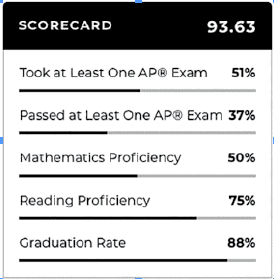
By Curt Peterson
Windsor Central Unified School District superintendent Mary Beth Banios announced at the May 11 board meeting that Woodstock Union High School was ranked “Third Best” among Vermont high schools in 2020 by U.S. News and World Report.
WUHS is one of 312 public high schools in the state. Mt Mansfield Union High School was ranked No. 1 and Milton Senior High School No. 2.
U.S. News gave WUHS a score of 93.63 out of 100 and reported that 51% of Woodstock high school students participate in Advanced Placement courses, 6% are minorities, and 21% are “economically disadvantaged.”
Nationally, WUHS ranks 1,133 among more than 24,000 public high schools rated by U.S. News.
After that announcement, the WCUSD “Zoom” remote board meeting dealt mostly with ways in which the coronavirus pandemic has affected operations, finances and future plans for the seven-town school district.
Seniors Sam Powers and Alison Leibly reported that students are having difficulties adjusting to learning remotely.
“If the situation continues into the fall,” Powers told the board, “I think you should consider changing how the schools do e-learning.”
Leibly said there are inconsistencies among teachers and classes that make learning confusing, and that schedules and study materials are sometimes hard to locate. And students are left to their own devices in navigating the system.
Both said better and more frequent communications between students and the board members would be very beneficial. Sherry Sousa, director of instructional support services, said a July retreat involving administrators, parents, faculty and students is in the planning stages.
Powers reiterated his past suggestion that remote learning be used to schedule more “sleep time” for students.
“Teenagers need more sleep than adults to function well, and this is an opportunity to provide that,” he said.
Banios reflected on state education finances, saying the current fiscal year (FY20) “will probably end up OK,” but FY21 may face a $350 million state-wide education fund shortfall, forcing a choice between cutting costs and finding ways to generate revenue. The deficit could translate into a 25 cent increase in statewide property tax rates, which would translate to $650 additional tax on a $250,000 assessment.
Finance and Operations Director Mike Concessi said Butler’s Bus Service passed reductions in driver and fuel costs of $60,000 this spring back to the district.
WUHS principal Garon Smail said grading students’ accomplishments during the pandemic shut-down will be partially arbitrary by necessity. Reliance on internet access is so important that inequities are bound to exist, he admitted.
“Those with the most resource do the best, as always,” Adam Ameele (Reading) commented.
Banios replied that Raph Adamek, director of instructional technology, is working with several internet providers to remedy the lack of internet connectivity in certain areas within the district. Final grades will rely significantly on teacher judgment, she added.
Concessi explained how the shut-down has affected district finances, helping resolve a final deficit for FY19 of $60,000 through non-continuing expenses, such as the bus company rebate. He said there should be no deficit carry-over from the current budget year.
For two schools, The Prosper Valley School in Pomfret, and Reading Elementary School, the pandemic has been a distraction.
Bob Crean, a Pomfret resident, pointed out that no plans have been announced regarding using $50,000 in the FY20 budget slated for rehabilitation of TPVS, which has been closed for two years due to moisture and mold problems.
And RES, with 35 students, has the highest cost per student among the five operating campuses at $25,814 — 32% higher than the average for all campuses, which is $19,926.

